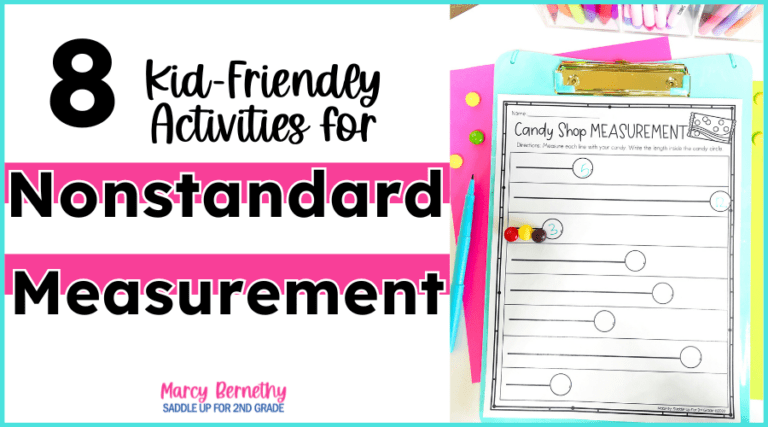

Join me for a FREE, Guided Math workshop to discover how to easily incorporate Guided Math into your current schedule!
Typically, 2nd grade is the grade level where students are exposed to double digit addition problems for the first time. It is the year that they will be exposed to multiple addition strategies that they can use to solve problems. As an elementary math teacher, we spend a lot of time discussing these strategies for adding two digit numbers, using models and manipulatives, and doing mental math.
It is often asked why we teach these addition skills so differently from the way we as adults learned growing up. The answer is simple. It is a great way to teach the WHY before we teach the HOW. We must give student’s lot of options and flexibility when it comes to solving problems. Each child learns and can find the correct answer differently.
The Texas TEK for two-digit addition states: 2.4B: Add up to four two-digit numbers and subtract two-digit numbers using mental strategies and algorithms based on place value and properties of operations.
The Common Core Standard for double digit addition states: 2.NBT.B.5: Fluently add and subtract within 100 using strategies based on place value, properties of operations, and/or the relationship between addition and subtraction.
Note that the bolded text above says nothing about the standard algorithm for 2-digit addition that we learned growing up years ago. Keep reading to learn about four ways I introduce and teach my students two digit addition strategies.
Note that these strategies will not focus on regrouping to find the final sum. Students need a strong understanding of place value AND simple addition from previous exercises before moving on to that task.
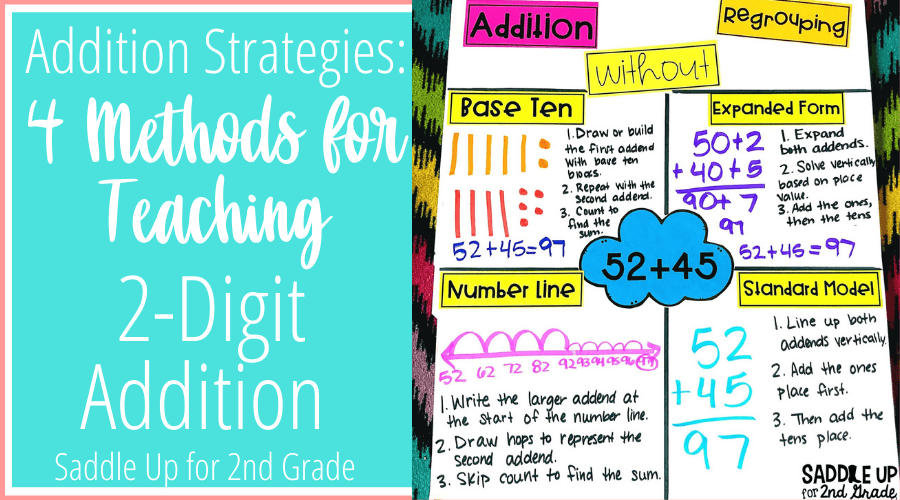
At the beginning our double digit addition math lessons unit I always make this anchor chart. As we learn a new strategy it is added to our whole group chart. My students keep a matching copy of this in their math journal. This is helpful for them to look back on when they need extra support. Learning the different strategies for adding two digit numbers can be difficult so the student anchor charts tend to help tremendously!
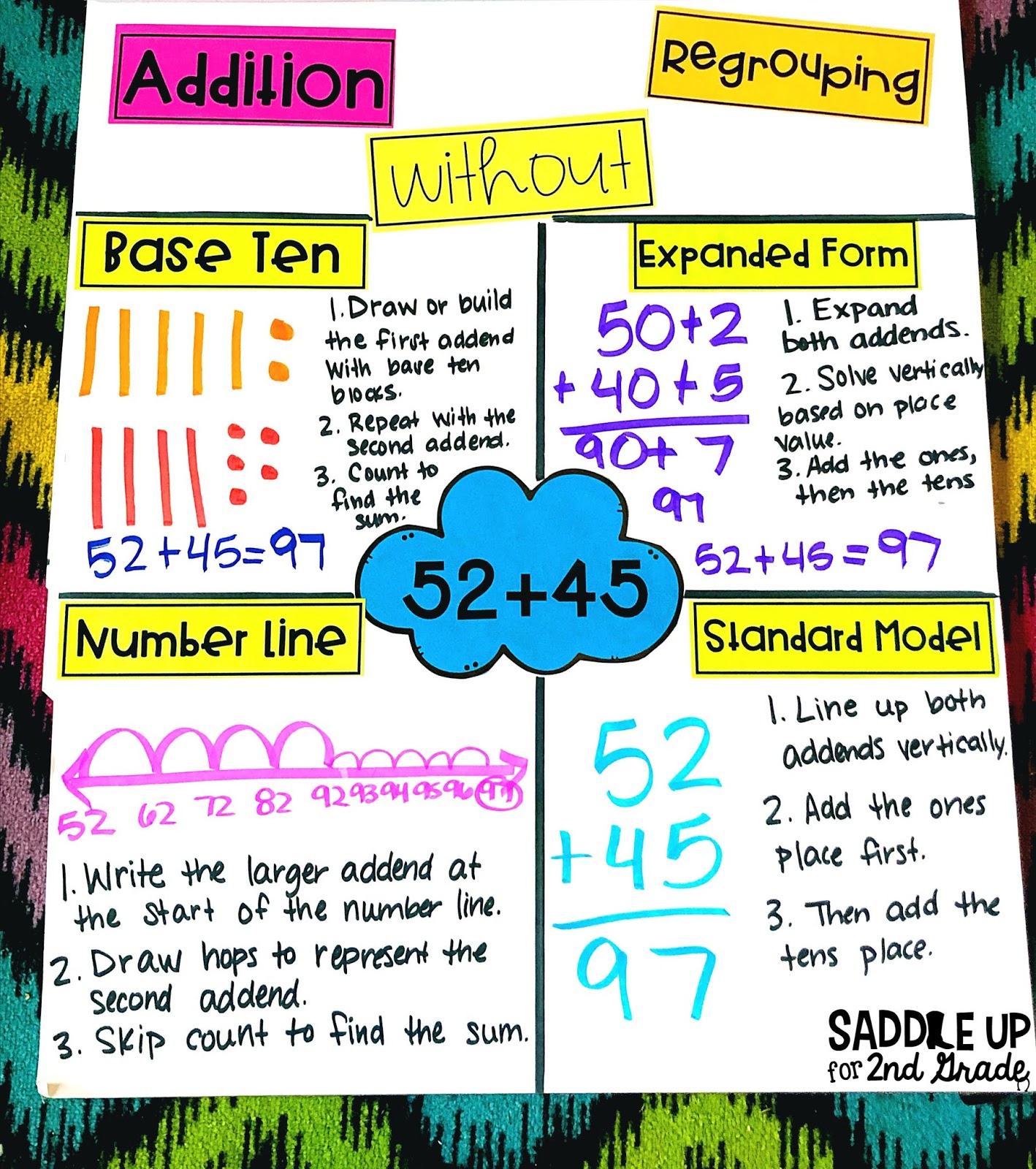
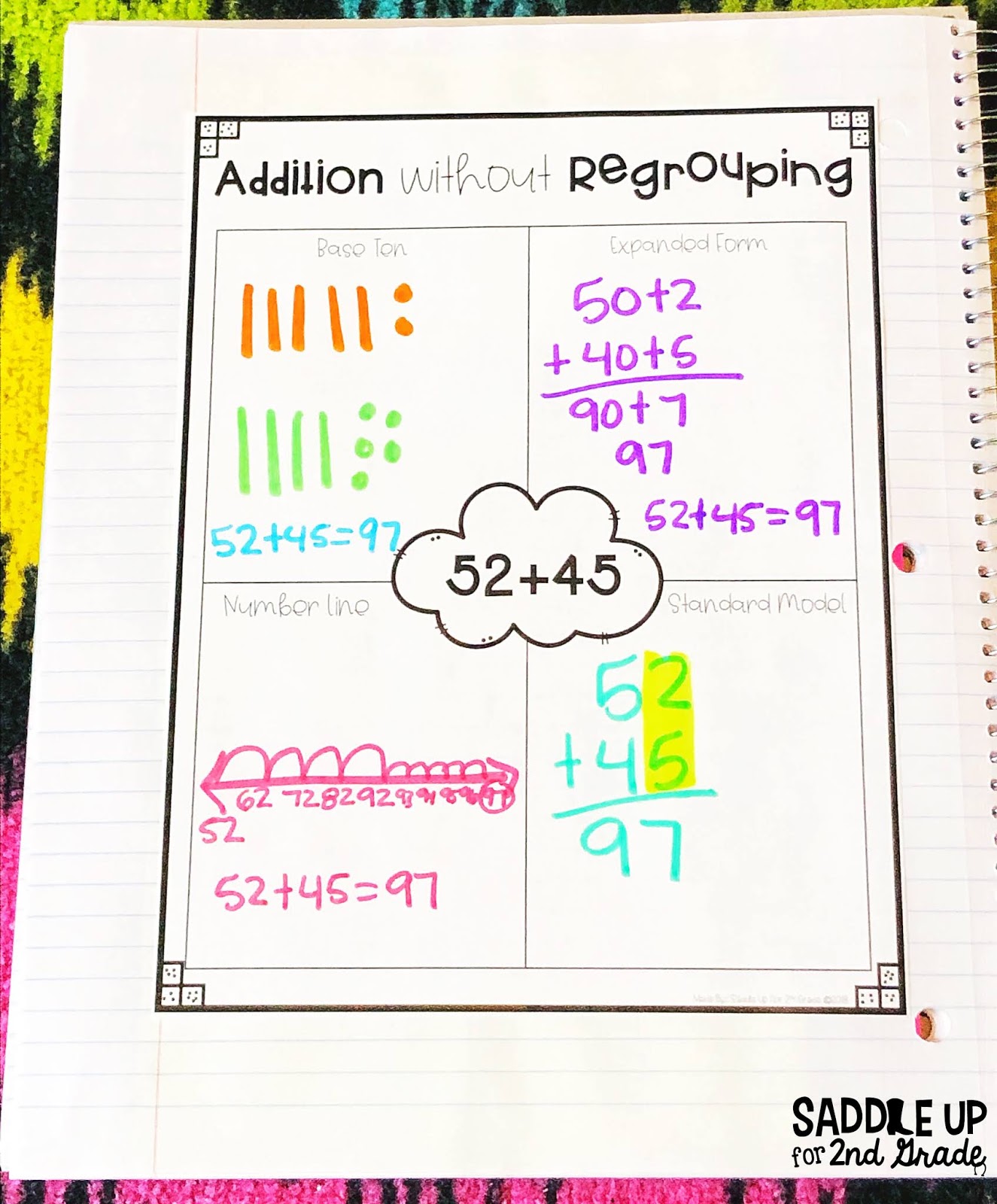
Let me break down these four strategies for adding two digit numbers a little more.
When introducing two-digit addition, I always start with the base ten model. This is the first of the double digit addition strategies that we learn together. We do lots of work with base ten block manipulatives but I also teach them to draw the blocks out on paper. This is because students won’t always have those manipulatives available to them, but they will have a pencil and paper. I’ve found that this strategy is most often used if students have a strong sense of place value.
I always give my students a place value mat placed inside a plastic sleeve. This allows students to also write or draw using a dry erase marker and they can be used over and over again to practice these math skills.
1. Build/draw out both addends with base ten blocks. (Sometimes it is fun to use other manipulatives. In the photo example, I used pipe cleaners cut into pieces for the tens and small pompom balls for the ones.)
2. Count the ones first and then the tens. This will help when regrouping is introduced later.
3. Solve for the sum.
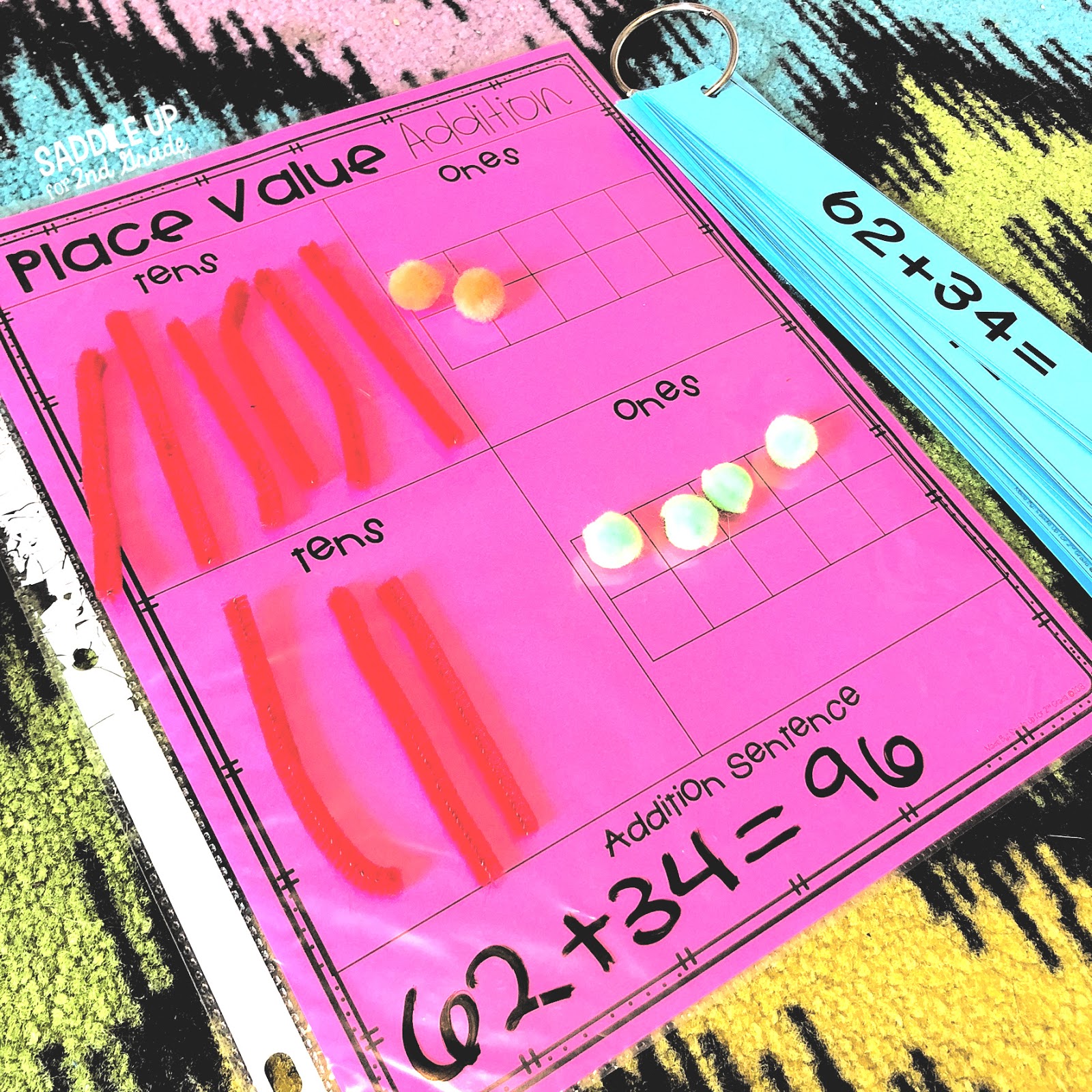
When students need to draw out this strategy it works the same way. I teach them to draw “sticks” to represent the tens and “dots” to represent the ones. I also teach them to draw out the first addend and then draw the second addend underneath. They’ll count to solve for the sum.
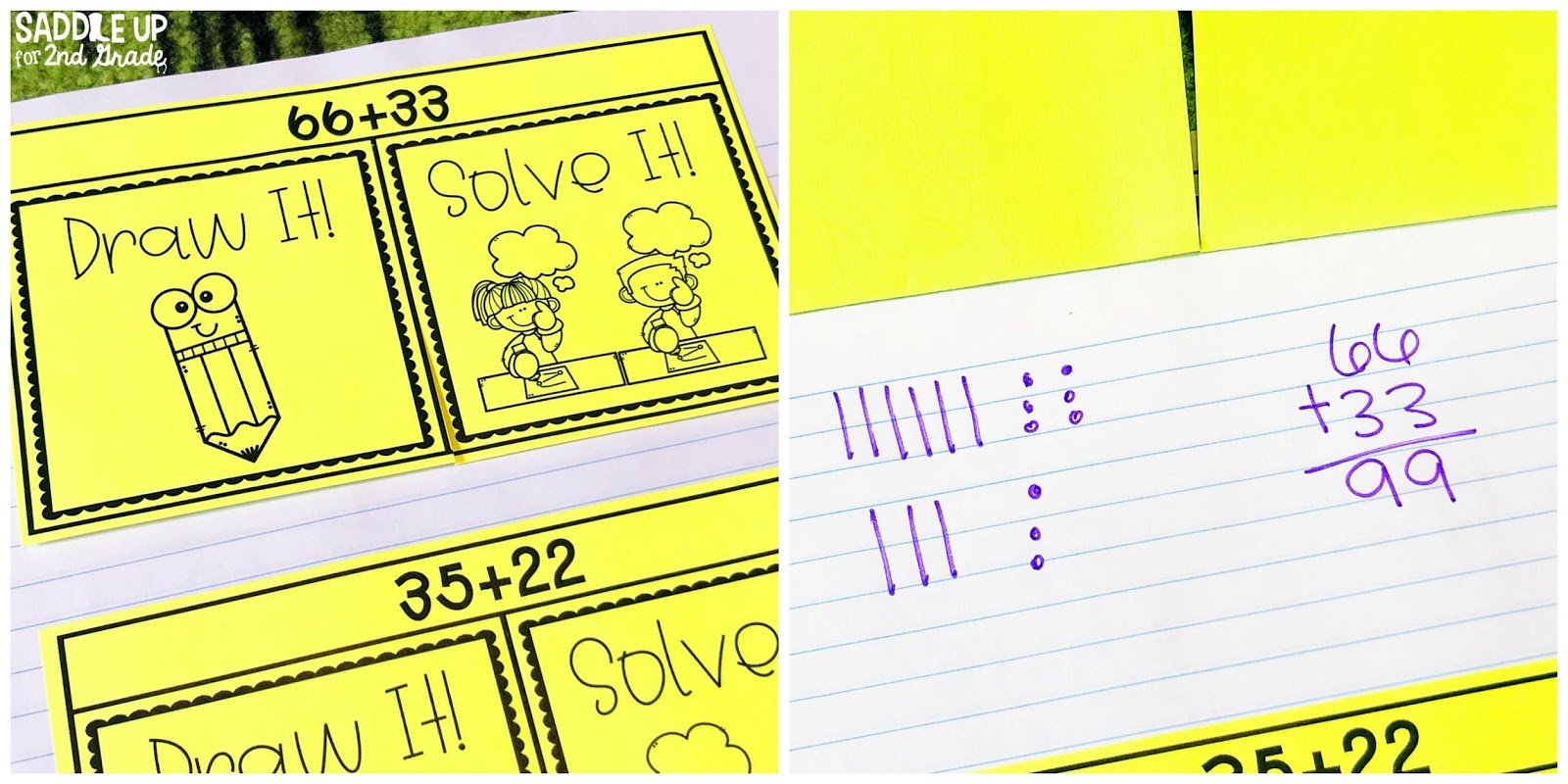
The second double digit addition strategy that I always introduce is the Expanded Form Method. This is another strategy that is extremely beneficial, but students must again have a strong knowledge of place value and expanding numbers. Each addended will be broken apart into tens and ones and helps students see that the tens place isn’t just a 6. It’s value represents 60 or 6 tens.
Using an open number line to solve two-digit addition problems is highly beneficial but also tends to be more challenging for students. Especially if they do not have a strong knowledge of mental math.
This strategy focuses on students “hopping” along a number line to solve the sum of a given problem. Large hops are drawn for plus 10 and smaller hops are drawn for plus
To help students visualize this strategy more, I always include base ten blocks at first. When they are more comfortable with this strategy then they can take them away.
1. Draw an open number line.
2. Write the larger addend at the start of the number line.
3. Then, students use base ten blocks to build the other addended horizontally across the number line.
4. Draw large hops over the tens for +10 and small hops over the ones for +1. 5.
They’ll skip count and write out the numbers to solve for the sum.
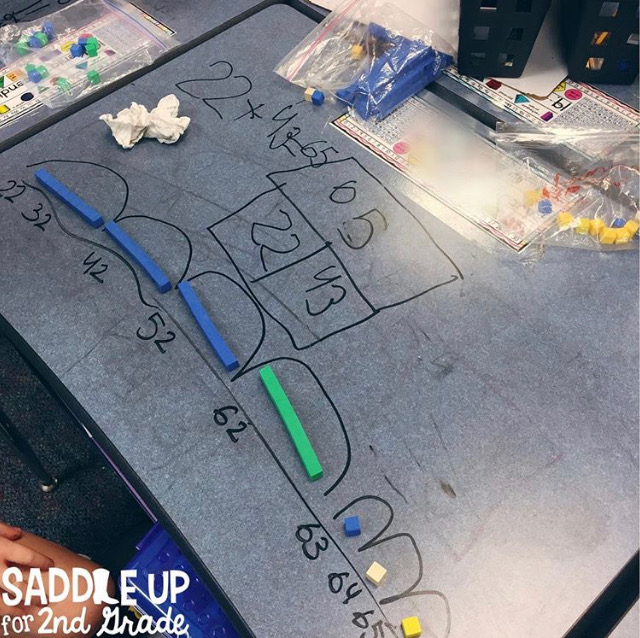
When it comes to putting pencil to paper your students can easily do the same strategy. If they need to draw base ten blocks along their number line they can. Our goal is for them to be able to mentally add.
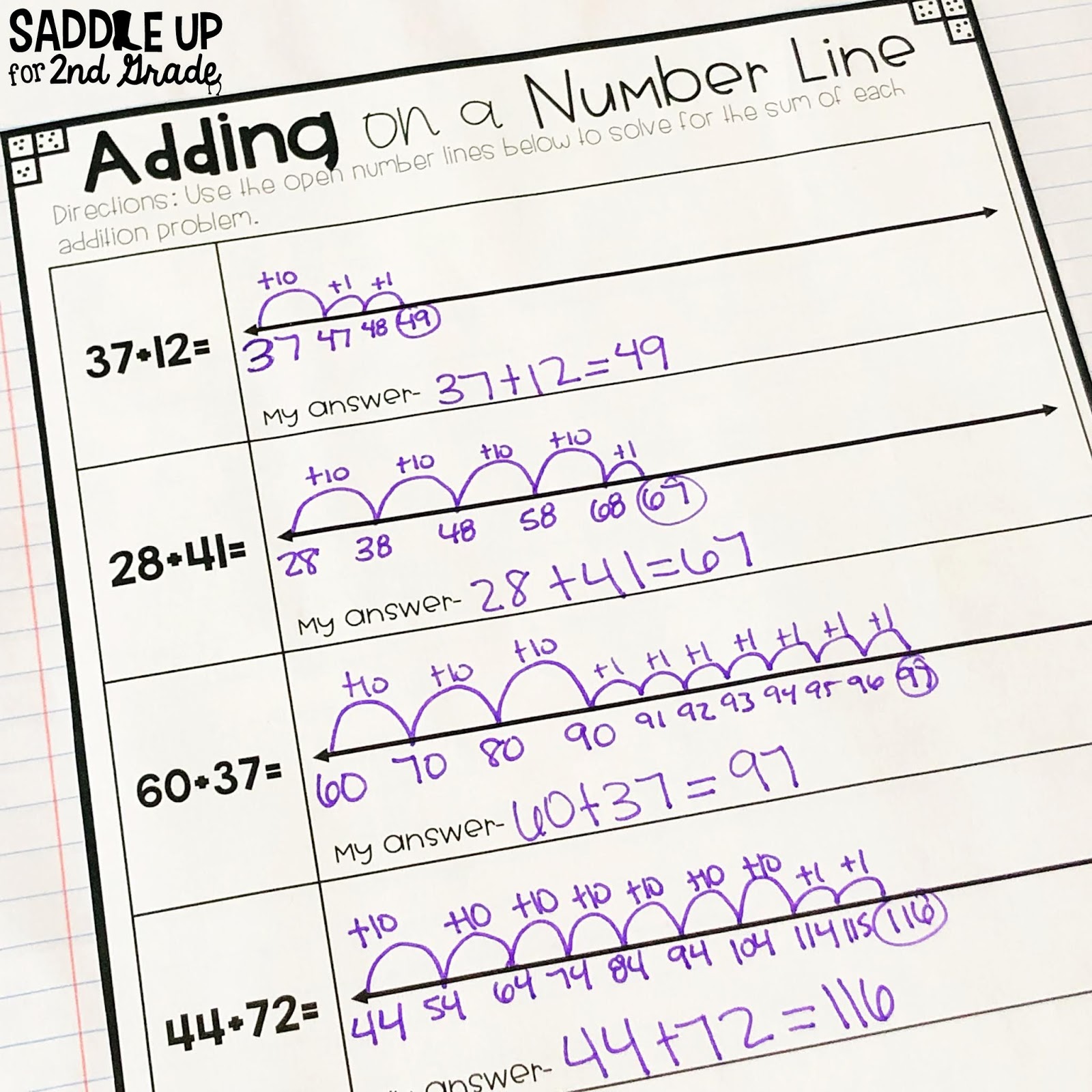
This traditional method is probably how you learned two-digit addition growing up and it is what our children’s parents are most familiar with. For this strategy, students need to line up both addends vertically underneath each other. They will add the numbers in the ones place first and then the tens place to solve for the sum.
One tip that can be helpful when first learning this strategy is to have students us a highlighter to highlight the ones place or have them circle the numbers in the ones place first. This helps them visualize to add the ones place first followed by the tens. I want this to become a habit for my students.
This concept can be more complicated for them than we realize because they are trained to read and write from left to right. It will be more difficult when they learn how to regroup when adding two-digit numbers so getting them in this habit first will be helpful.
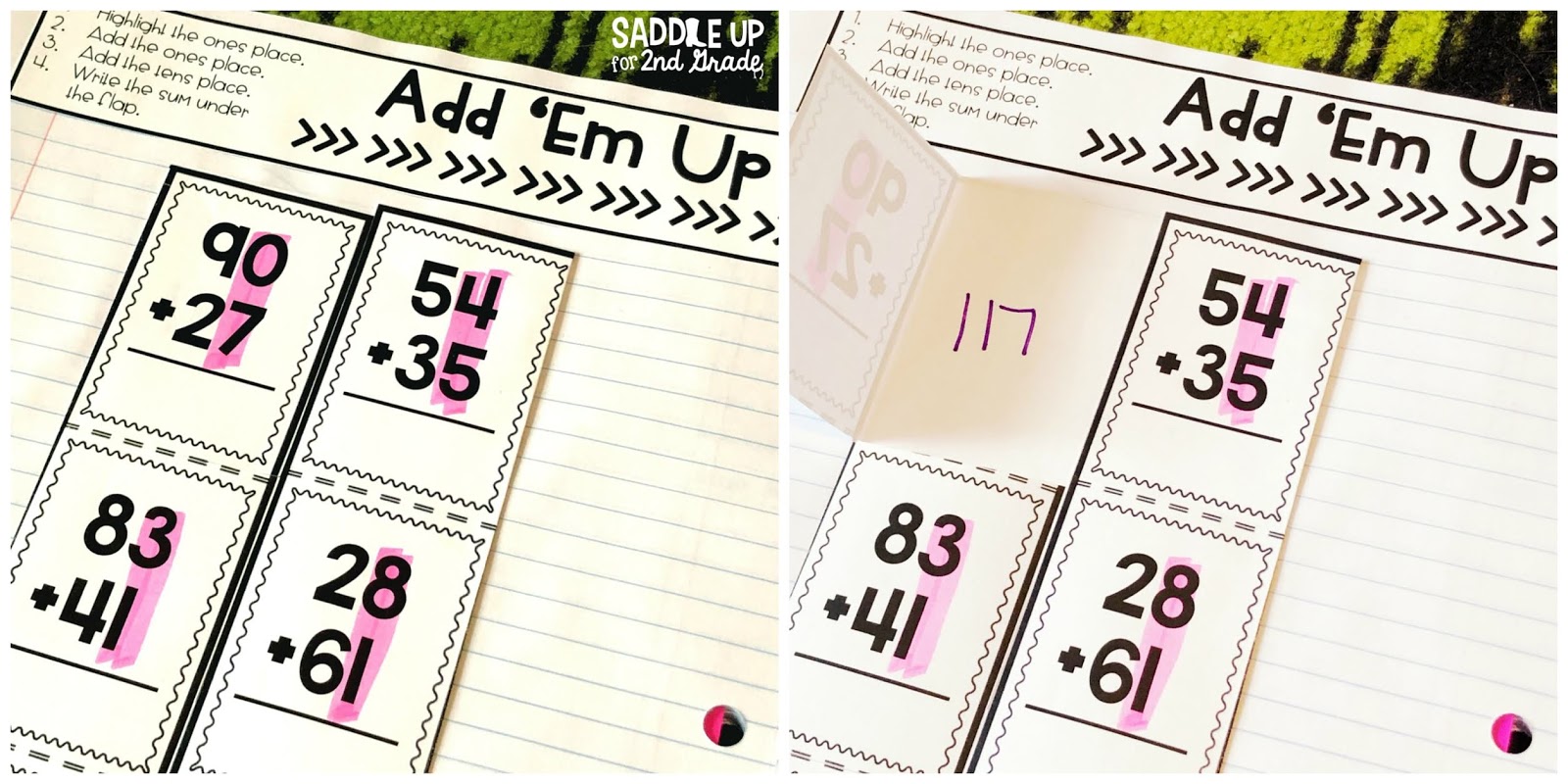
At the end of our unit, we always make these Double Digit Addition Strategy Flipbooks to help us review. They can keep these to use later as a reference when they need it.
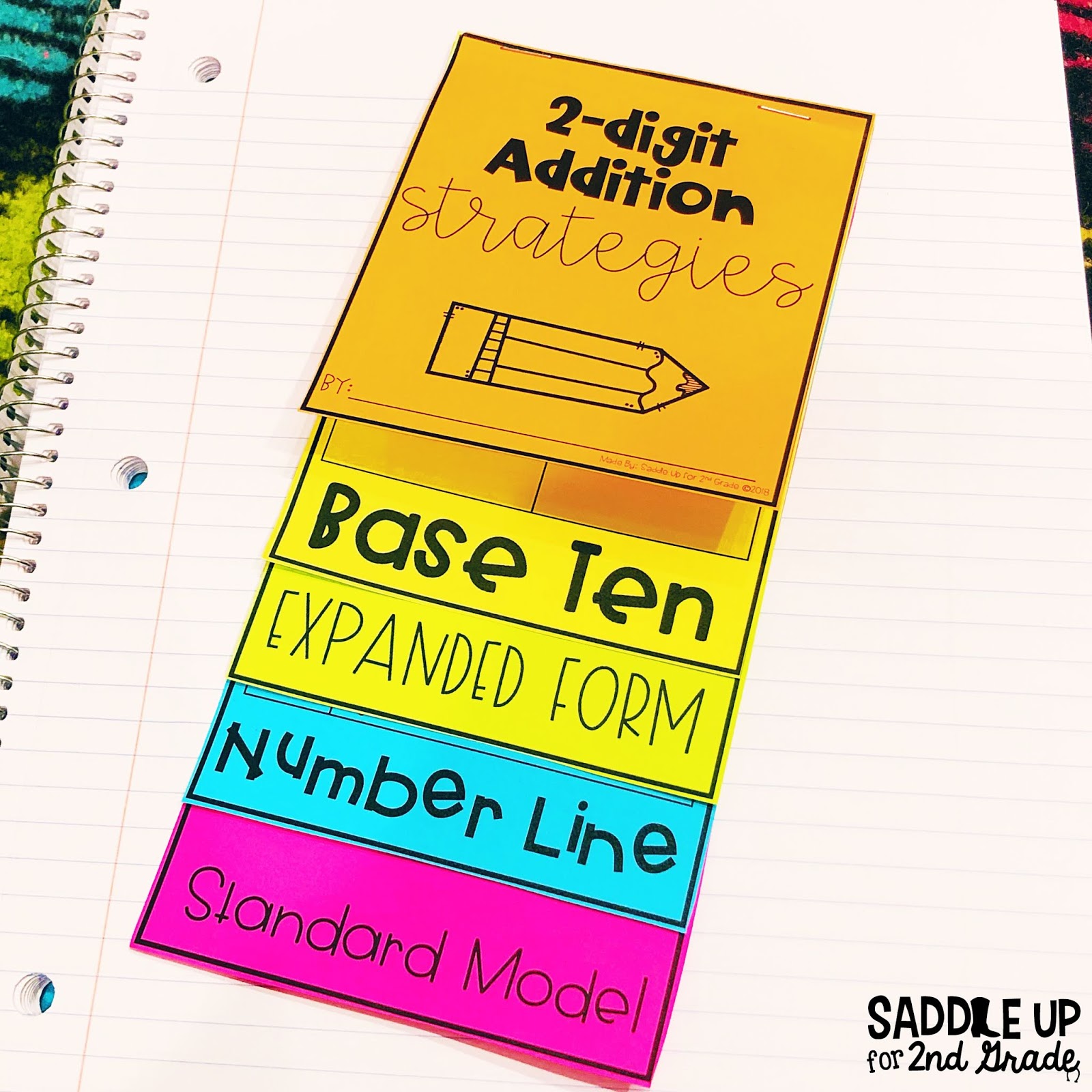
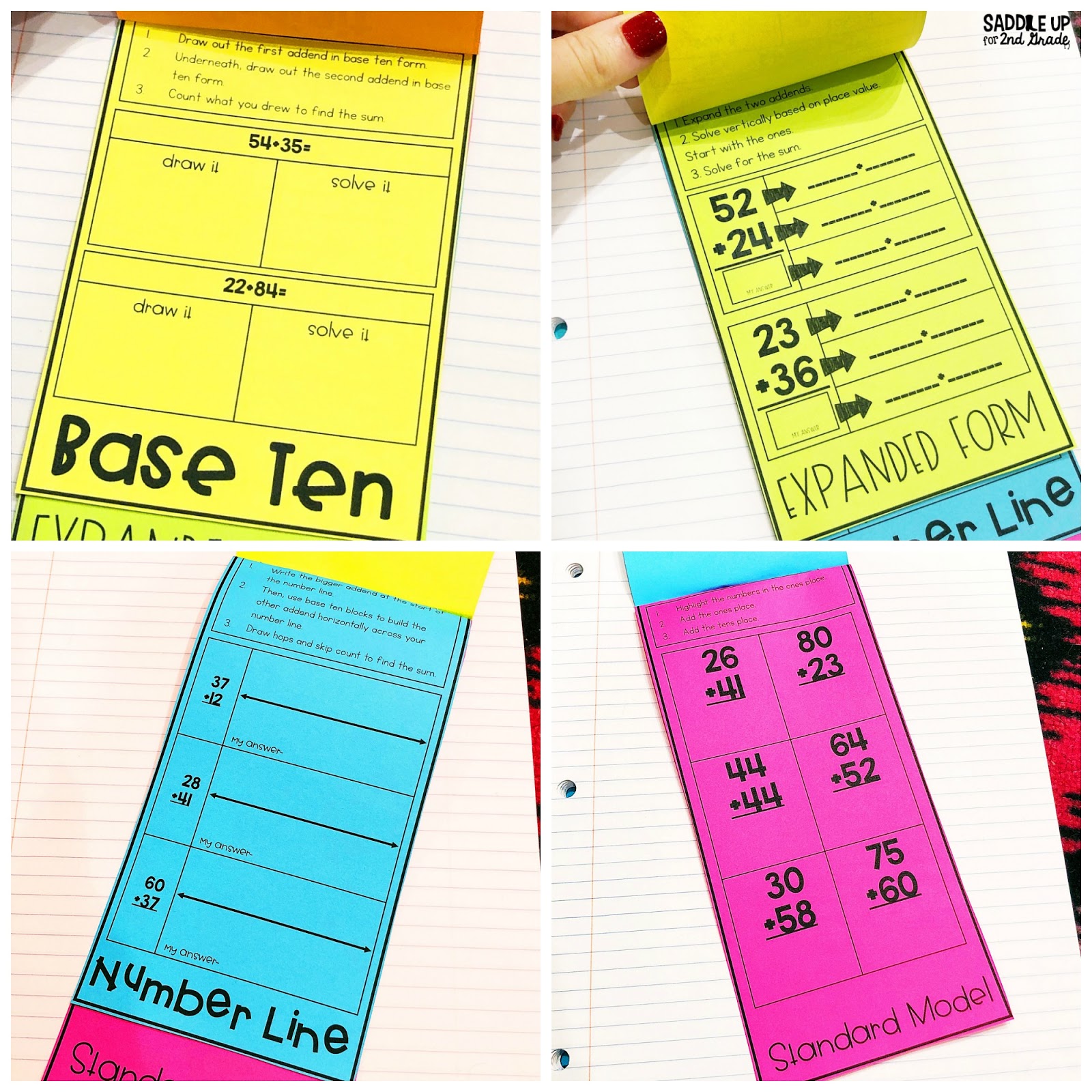
Whew! That may seem like a lot of information to process. We all learn concepts in different ways and the addition strategies that I have shared are what I have found to be beneficial for my own students.
There is no right or wrong strategy when it comes to solving two-digit addition problems. Allow your students to choose the method that works best for them and have them stick with it. Once they have found a method that they are comfortable with, it is important to provide them with multiple opportunities to practice adding 2-digit numbers.
Need a great resource? Below are some resource links that you may find helpful.
Addition and Subtraction without Regrouping Unit
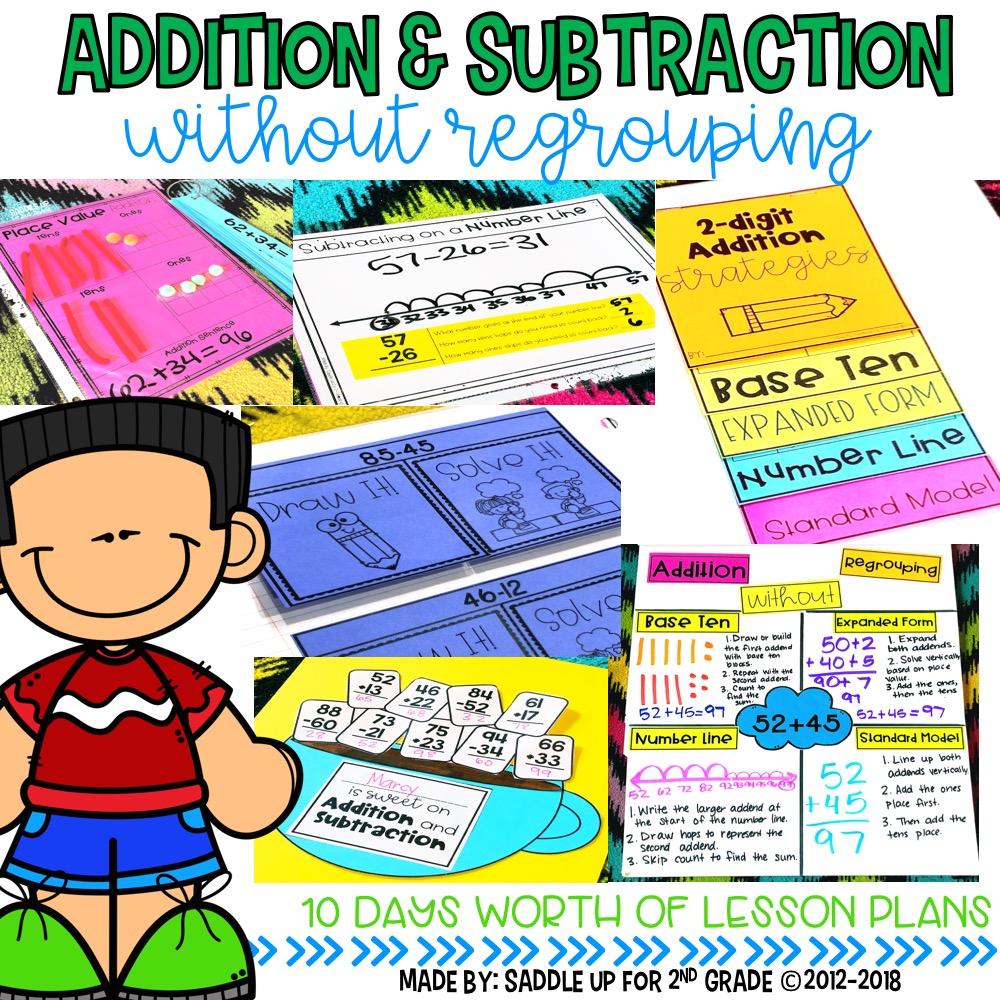
Want to save these ideas for later? Pin the image below.

Math should be fun, not stressful. Ditch the timed math fact tests and replace them with math games that will help your students learn and retain information more effectively.
© Saddle Up for 2nd Grade • Website by KristenDoyle.co